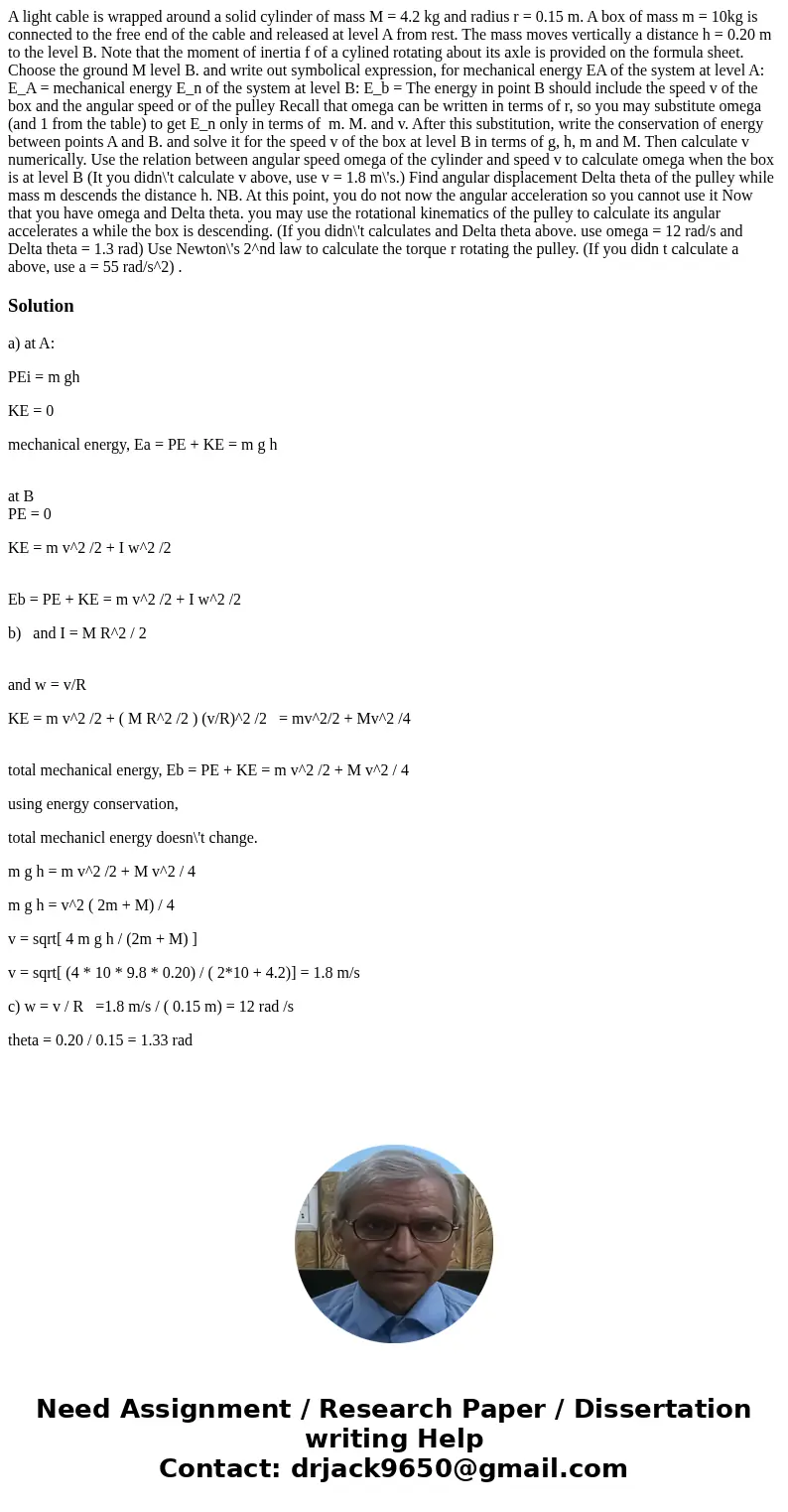A light cable is wrapped around a solid cylinder of mass M
A light cable is wrapped around a solid cylinder of mass M = 4.2 kg and radius r = 0.15 m. A box of mass m = 10kg is connected to the free end of the cable and released at level A from rest. The mass moves vertically a distance h = 0.20 m to the level B. Note that the moment of inertia f of a cylined rotating about its axle is provided on the formula sheet. Choose the ground M level B. and write out symbolical expression, for mechanical energy EA of the system at level A: E_A = mechanical energy E_n of the system at level B: E_b = The energy in point B should include the speed v of the box and the angular speed or of the pulley Recall that omega can be written in terms of r, so you may substitute omega (and 1 from the table) to get E_n only in terms of m. M. and v. After this substitution, write the conservation of energy between points A and B. and solve it for the speed v of the box at level B in terms of g, h, m and M. Then calculate v numerically. Use the relation between angular speed omega of the cylinder and speed v to calculate omega when the box is at level B (It you didn\'t calculate v above, use v = 1.8 m\'s.) Find angular displacement Delta theta of the pulley while mass m descends the distance h. NB. At this point, you do not now the angular acceleration so you cannot use it Now that you have omega and Delta theta. you may use the rotational kinematics of the pulley to calculate its angular accelerates a while the box is descending. (If you didn\'t calculates and Delta theta above. use omega = 12 rad/s and Delta theta = 1.3 rad) Use Newton\'s 2^nd law to calculate the torque r rotating the pulley. (If you didn t calculate a above, use a = 55 rad/s^2) .
Solution
a) at A:
PEi = m gh
KE = 0
mechanical energy, Ea = PE + KE = m g h
at B
PE = 0
KE = m v^2 /2 + I w^2 /2
Eb = PE + KE = m v^2 /2 + I w^2 /2
b) and I = M R^2 / 2
and w = v/R
KE = m v^2 /2 + ( M R^2 /2 ) (v/R)^2 /2 = mv^2/2 + Mv^2 /4
total mechanical energy, Eb = PE + KE = m v^2 /2 + M v^2 / 4
using energy conservation,
total mechanicl energy doesn\'t change.
m g h = m v^2 /2 + M v^2 / 4
m g h = v^2 ( 2m + M) / 4
v = sqrt[ 4 m g h / (2m + M) ]
v = sqrt[ (4 * 10 * 9.8 * 0.20) / ( 2*10 + 4.2)] = 1.8 m/s
c) w = v / R =1.8 m/s / ( 0.15 m) = 12 rad /s
theta = 0.20 / 0.15 = 1.33 rad

 Homework Sourse
Homework Sourse